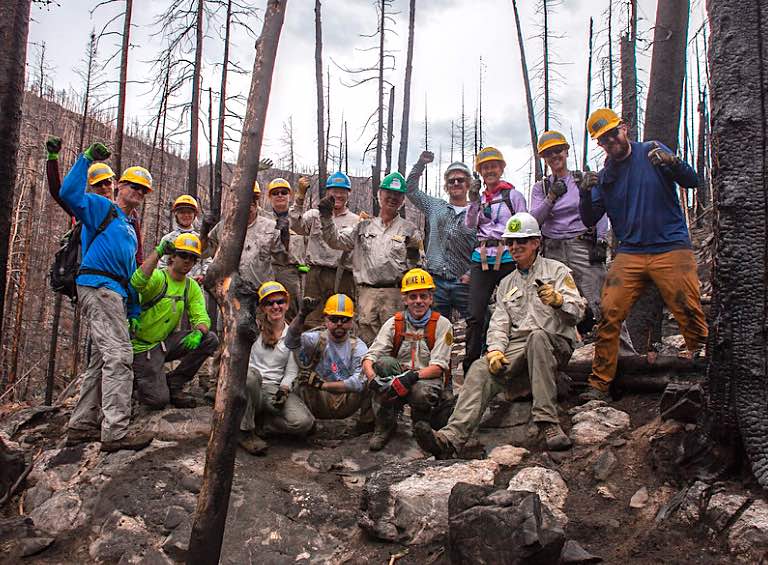Since the launch of PWV's GoFundMe trail restoration campaign, we have received and incredible amount of media coverage. (A big thank-you goes out to the Public Outreach Committee and all those involved in making this happen.)
In addition to multiple media articles and TV reports in Colorado, PWV recently appeared in France's LeMonde newspaper with a readership of over 400,000.
Click here to see a list of all media coverage of our Cameron Peak Fire restoration efforts.
Below is an excerpt from the LeMonde newspaper article from July 28, 2021:
"RUSTIC (COLORADO) - special report
"Burn area”. At the intersection of Highway 14, a sign bars traffic. The forest is prohibited “to all users”. This July, we cannot access the source of the Colorado River, La Poudre Pass Lake. It is from there that the great river of the American West begins, at an altitude of 10,170 feet, in the shadow of the Never Summer Mountains, the mountains that never see summer. Usually this is a popular destination for hikers. But now the landscape is disfigured.
In 2020, this area of northern Colorado, which stretches along the Cache la Poudre River, suffered the largest fire in the state. “We were evacuated for three months,” says Tasha Collins, owner of the Trading Post Resort, a business near the town of Rustic that features a taxidermy bear and log cabins popular with fly fishing enthusiasts. The blaze, the Cameron Peak Fire, was not declared contained until December 2020, after one hundred and twelve days: only snow had overcome it. It left behind a mosaic of burnt logs and a river filled with ashes.
A few months later, volunteers from the Poudre Wilderness Volunteers are busy at Cameron Pass. Fallen trees on the paths — ponderosa pines more than one hundred years old — must be cut and cleared, and seventeen destroyed bridges rebuilt. In some places, it got so hot that the earth “formed an impermeable crust,” describes Mike Corbin, their crew leader. With 300 members, the organization, created in 1996 when the national Forest Service cut budgets, is the largest of its kind in the United States. After the Cameron Peak Fire, it was inundated with donations, a sign of the emotion of the inhabitants — Denver, the state capital, is 105 miles away — seized by the violence of the fire and suffocated by the smoke.
This July weekend, volunteers are on the waiting list to help restore the forest. Two thousand charred trees were cleared from the trails. There are at least three times as many left. "The climate is changing, that's clear," sighs Mike Corbin. "Before, the weather was much more predictable. In the summer we had thunderstorms every afternoon." Now the "monsoon" (the term used in the American West) is erratic. In 2020, it didn't even materialize. In the spring, when the snow melted, water entered the thirsty soil rather than pouring into streams. The Colorado River has never been so drained.
From its birthplace in the Rockies to its mouth in the Sea of Cortez, Mexico, the Colorado is a besieged river, caught in the infernal cycle that has become common in summers in the West: heat, drought, fires. 1442 miles long, it supplies water and hydroelectricity to 40 million people (and 29 indigenous tribes) in seven states. And it irrigates the crops that these desert regions persist in growing (rice and cotton in Arizona)."
Read entire translated article

